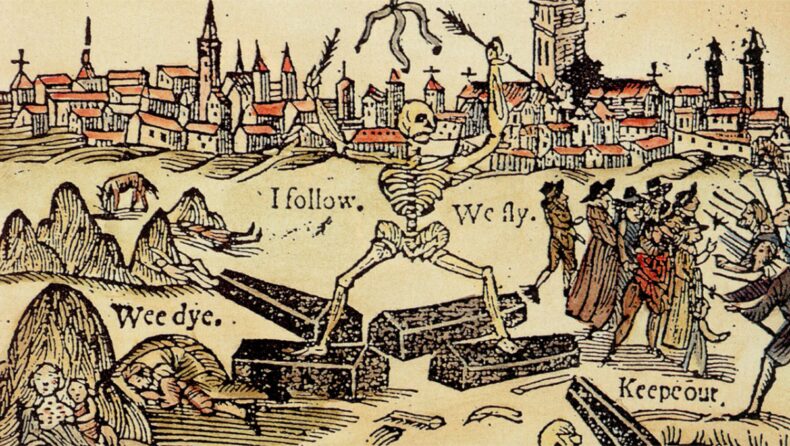Scientists have now solved the 700- year old mystery of pandemic ‘Black Death’ by a deep study. Read more….

Highlights
-
Black death happened 700 years ago around the 14th century.
-
At the least 10 million people were killed in this pandemic.
-
It was revealed when they were examining skeletons dated around 1248 to 1345.
-
DNA from Yersinia Pestis was found in these skeletons
Black Death was a bubonic plague pandemic which occurred from 1347 to 1351. More than 200 million people were killed in this pandemic. It happened in the Afro- Eurasia. This bubonic plague is caused by the bacterium Yersinia Pestis which can be spread by fleas. It can also take secondary form and can be spread by man to man contact. Plague can be a septicemic and pneumonic infections.
This pandemic caused a big difference in the religious, social and economic sections of the society. There has been an uprising and renewal of the public view. There have been astounding differences made in the medical field too.
The new discovery of the origin of black death is amazing. They have determined the place of origin of black death to central Asia. This had happened when Dr. Philip Slavin, historian, university of Stirling found evidence to show sudden surge in death near the lake Issyk-Kul in the north of modern- day Kyrgyzstan in late 1330s.
In these cemeteries, there were more than 450 graves dated back from 1248 to 1345. In these tombstones, around 118 are dated from 1338 to 1339. Dr. Slavin, found the reason of death to be “Mawtānā”(Syriac language term). It means ‘pestilence’ which is another name of black death.

The black death origin discovery
These sites were excavated in 1880s and 30 skeletons were removed from their graves for examining. Further examining was done by ancient DNA specialists like prof Johannes Krause of Max Planck institute for evolutionary anthropology and Dr. Maria Spyrou at the university of Tübingen in Germany.
When the genetic material of the skeletons was extracted from the teeth, they found the DNA of Yersinia pestis in three skeletons buried in the cemeteries. Yersinia pestis is the bacterium which causes bubonic plague. This bacterium’s genome, when analyzed, showed that it is an ancestor of the infection which led to black death few years later.
Krause said that they have located the origin in time and space of this ancestor of black death. He also said that this is also the ancestor of the majority of the plague strains that are circulating in the world today.
To conclude, this discovery is remarkable as this helps us to understand old times and find cure for the newer strains of this infection. This also helps us understand how black death occurred and how it affected society. It can be really helpful for us and the generations to come.













